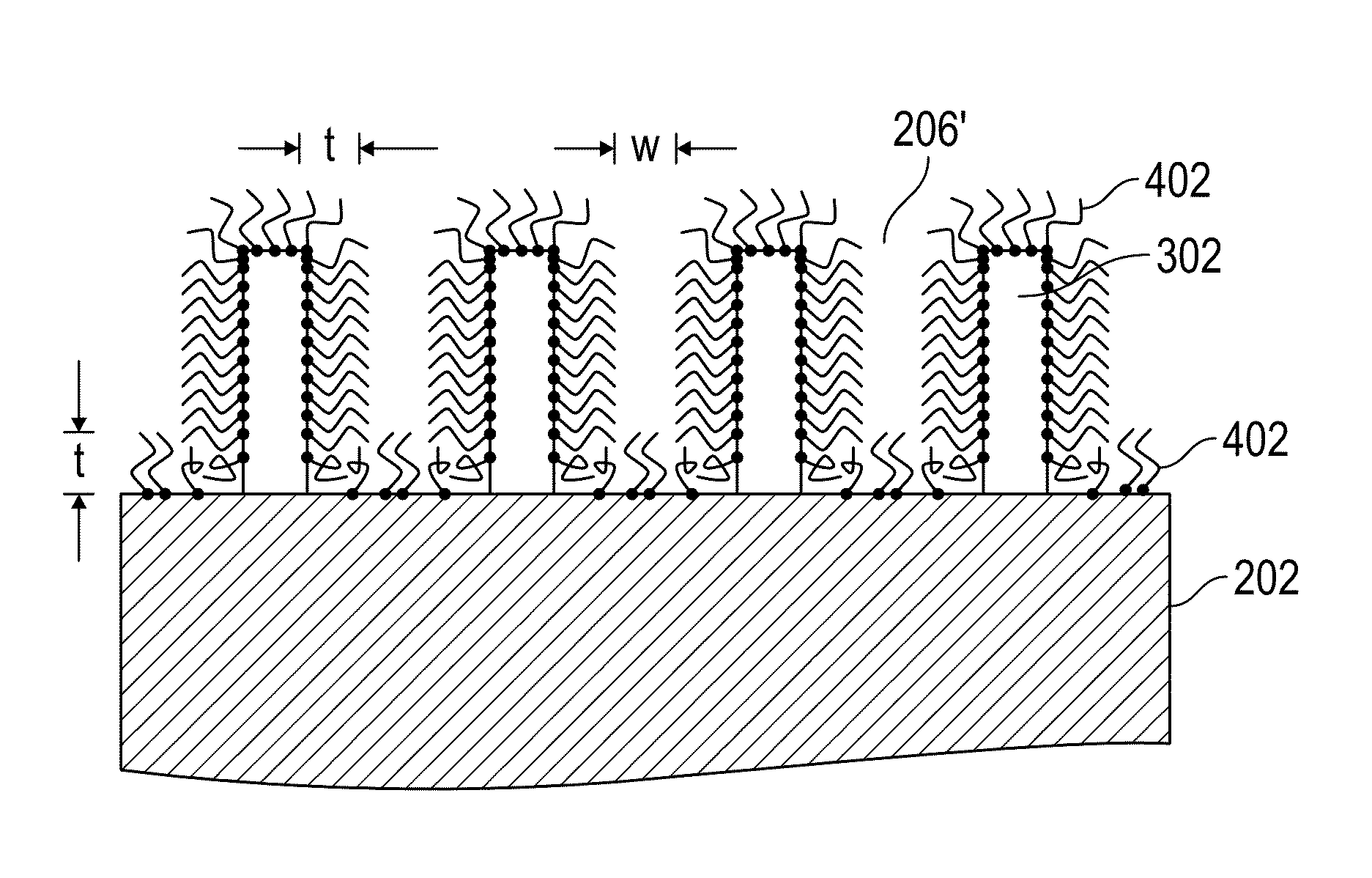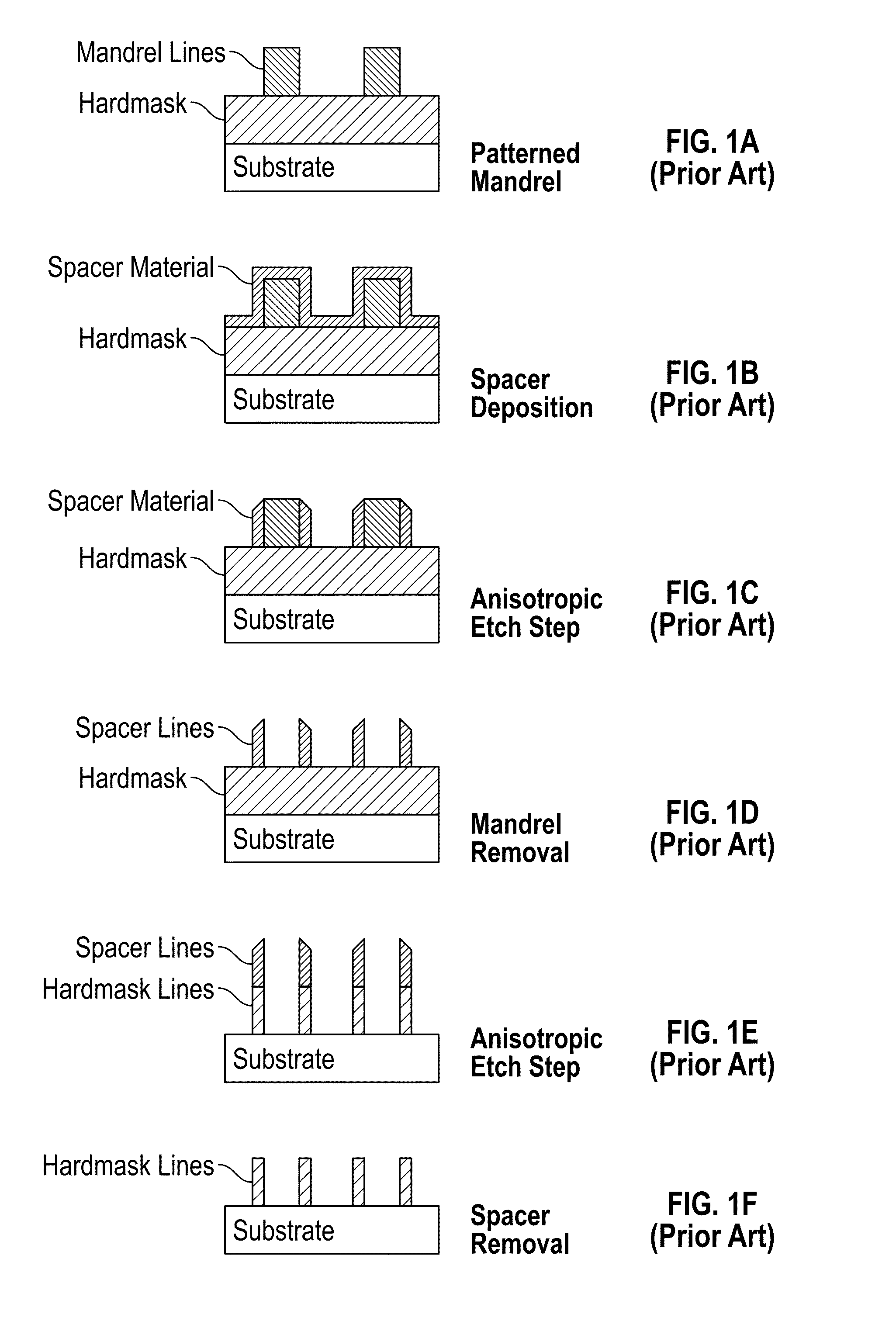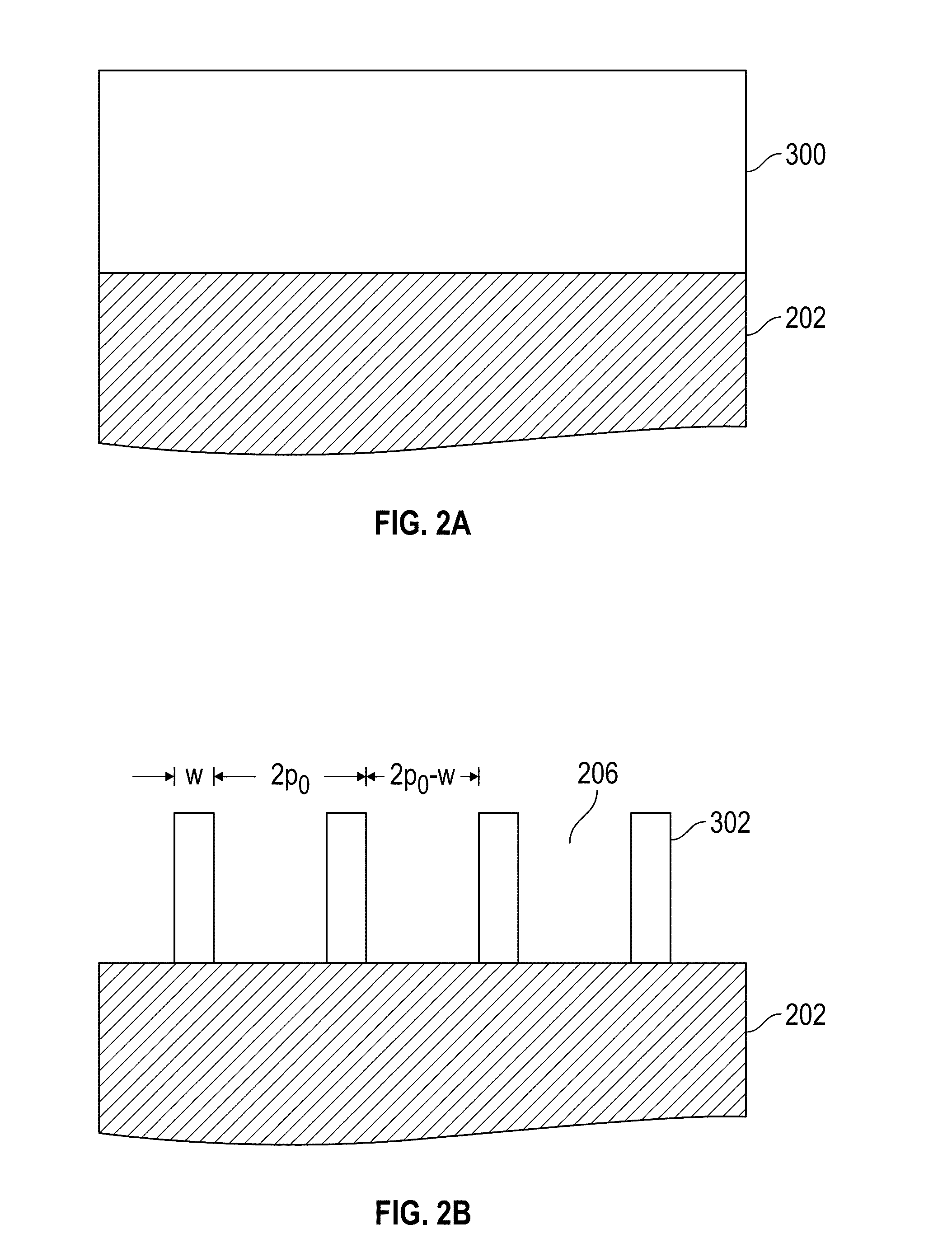Method for sidewall spacer line doubling using polymer brush material as a sacrificial layer
a polymer brush and spacer technology, applied in the field of nanotechnology, can solve the problems of difficult etching of inorganic spacer material with dimensions less than 20 nm, current photolithography has reached fundamental printing limits, and the effect of reducing the number of etchings
- Summary
- Abstract
- Description
- Claims
- Application Information
AI Technical Summary
Benefits of technology
Problems solved by technology
Method used
Image
Examples
Embodiment Construction
[0019]Embodiments of this invention relate to methods to double the frequency of a lithographic process using sacrificial sidewall spacers. The method starts with a mandrel layer that is patterned into a plurality of stripes with tops and sidewalls. However, instead of depositing a layer of inorganic oxide as spacer material, a monolayer of polymer brush is grafted conformably onto the mandrel stripes. Additional stripes will be added between the spacers. After removing the polymer brush spacer material, preferably by oxygen reactive ion etching (RIE), the remaining mandrel stripes and the interpolated stripes will be the final line features that double the line frequency from the initial mandrel lines. The method will be described with FIGS. 2A-2I.
[0020]Referring to FIG. 2A, the method starts with a planar substrate 202 which may be, but is not limited to, a single-crystal Si wafer, a fused silica wafer or fused quartz, and which may also be coated with materials such as silicon ni...
PUM
 Login to View More
Login to View More Abstract
Description
Claims
Application Information
 Login to View More
Login to View More - R&D
- Intellectual Property
- Life Sciences
- Materials
- Tech Scout
- Unparalleled Data Quality
- Higher Quality Content
- 60% Fewer Hallucinations
Browse by: Latest US Patents, China's latest patents, Technical Efficacy Thesaurus, Application Domain, Technology Topic, Popular Technical Reports.
© 2025 PatSnap. All rights reserved.Legal|Privacy policy|Modern Slavery Act Transparency Statement|Sitemap|About US| Contact US: help@patsnap.com



